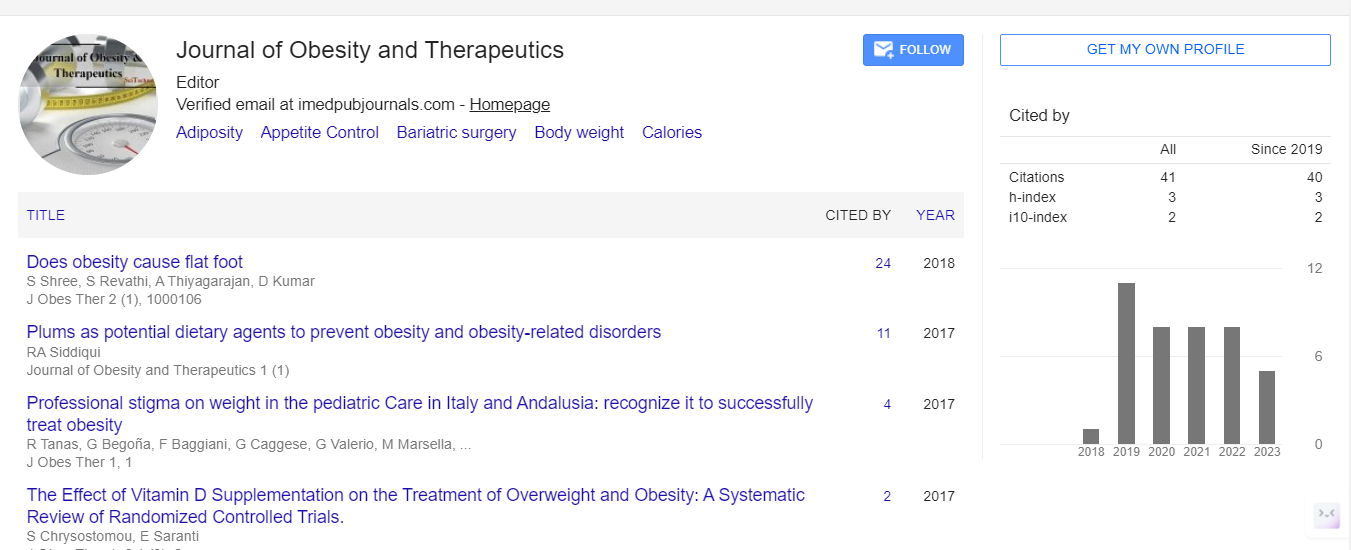Perspective, J Obes Ther Vol: 7 Issue: 1
Hidden Dangers and Risks of Liposuction
Cheryl Munnoch*
Department of Dermatology, Weill Cornell Medical University, New York, USA
*Corresponding Author: Cheryl Munnoch
Department of Dermatology, Weill
Cornell Medical University, New York, USA
E-mail: cherylmunn@yahoo.com
Received date: 20 February, 2023, Manuscript No. JOT-23- 93730;
Editor assigned date: 22 February, 2023, PreQC No. JOT-23- 93730 (PQ);
Reviewed date: 09 March, 2023, QC No JOT-23- 93730;
Revised date: 16 March,2023, Manuscript No. JOT-23- 93730 (R);
Published date: 23 March, 2023, DOI: 10.4172/jot.1000229
Citation: Munnoch C (2023) Hidden Dangers and Risks of Liposuction. J Obes Ther 7:1.
Description
Liposuction is a popular cosmetic surgery that removes excess fat from the body. While it can be an effective way to achieve a slimmer physique, many people are unaware of the potential hidden dangers and risks that come with this procedure. This is a cosmetic procedure that involves removing fat from different areas of the body using a suction device. The most common areas treated include the abdomen, thighs, arms, and hips. This procedure is often performed under local anesthesia, and patients are typically able to return home the same day. Liposuction has been used to treat a variety of benign tumors, such as lipomas and hemangiomas. This technique can provide a less invasive alternative to traditional surgical techniques, with less scarring and a shorter recovery time. Axillary hyperhidrosis is a condition in which patients experience excessive sweating in the armpits. Liposuction can be used to remove the sweat glands in the affected area, reducing or eliminating the excessive sweating. Lipodystrophy syndrome is a rare condition in which there is an abnormal distribution of fat in the body. This condition can cause the development of fatty deposits in unusual places, such as the face, neck, and upper body. It can be used to remove these fatty deposits and improve the patient's appearance.
Hidden dangers of liposuction
Liposuction can increase the risk of developing blood clots in the legs or lungs. This is because the procedure can cause damage to blood vessels, leading to the formation of clots that can break off and travel to other parts of the body. This can be life-threatening in some cases. Infections are a common complication of liposuction. The procedure involves making incisions in the skin, which can allow bacteria to enter the body. If left untreated, infections can lead to serious health problems. Liposuction can damage the nerves in the treated area, which can result in numbness, tingling, or even paralysis. In some cases, nerve damage can be permanent. A seroma is a fluidfilled pocket that can develop under the skin after liposuction. This can cause pain, swelling, and discomfort. In some cases, seromas may need to be drained or surgically removed. Liposuction is typically performed under local anesthesia, but some people may require general anesthesia. General anesthesia carries risks, including allergic reactions, breathing difficulties, and even death in rare cases.
Liposuction can result in uneven skin surfaces or contour irregularities, especially if too much fat is removed. This can be difficult to correct and may require additional surgery. While liposuction incisions are small, they can still result in visible scars. In certain cases, scars may be large or noticeable, depending on the amount of fat removed and the patient's skin type. Liposuction can cause fluid imbalances in the body, which can result in swelling, electrolyte imbalances, and even kidney failure in some cases. Fat embolism is a rare but potentially life-threatening complication of liposuction. It occurs when fat enters the bloodstream and travels to the lungs or brain, causing breathing difficulties or a stroke. While liposuction can improve a person's physical appearance, it can also have psychological effects. Some people may become obsessed with their appearance and seek additional cosmetic procedures. Others may experience depression, anxiety, or body dysmorphic disorder.
Conclusion
The liposuction can be an effective way to remove excess fat from the body, it is important to understand the potential hidden dangers and risks associated with this procedure. Patients should discuss the risks and benefits of liposuction with the doctor before undergoing the procedure. In some cases, a healthy diet and exercise may be a better option than liposuction.
 Spanish
Spanish  Chinese
Chinese  Russian
Russian  German
German  French
French  Japanese
Japanese  Portuguese
Portuguese  Hindi
Hindi 